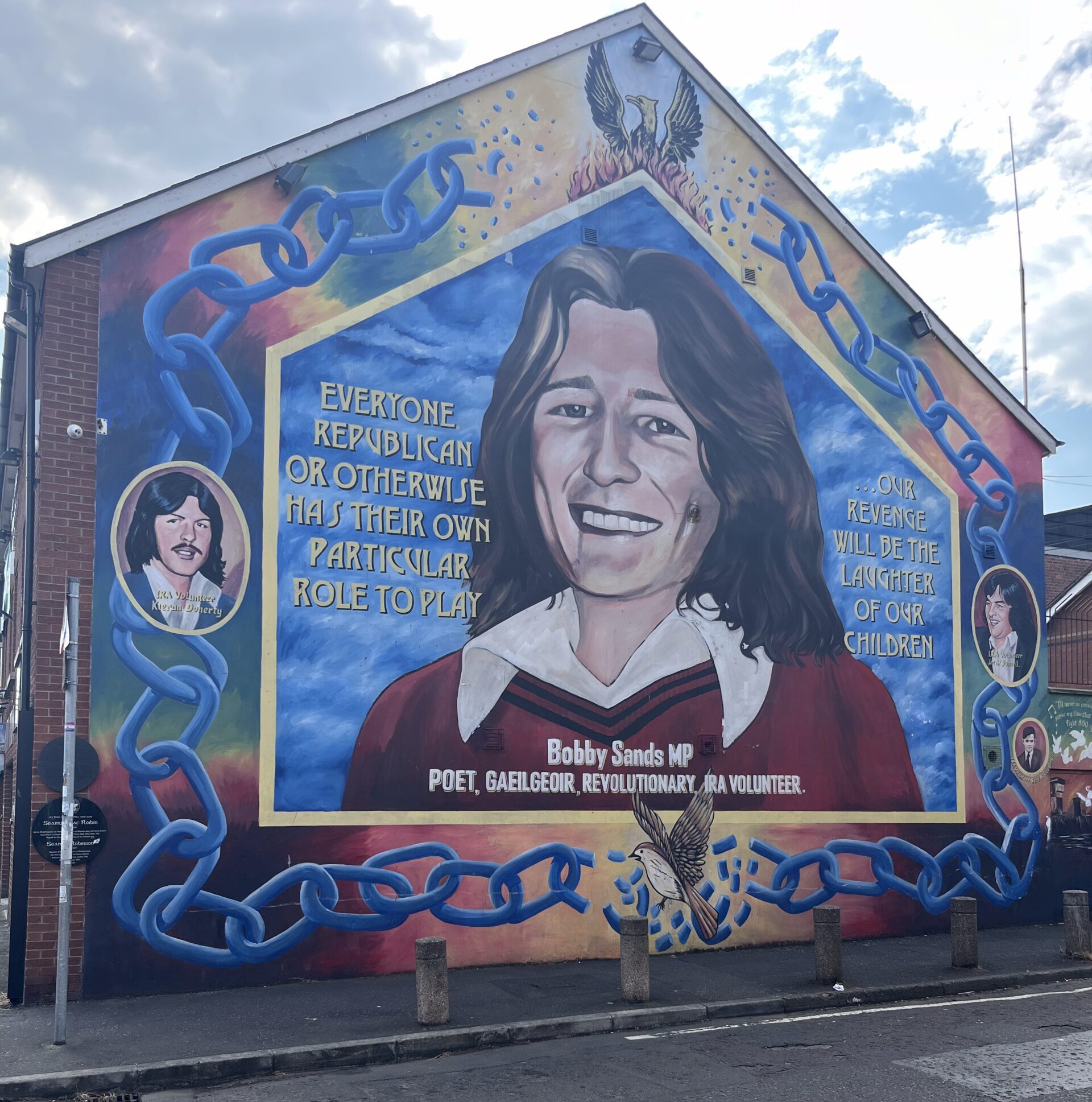Currently living in Ulster University student accommodations on the north end of City Centre, I frequently ride the Glider Bus to visit my cousins in Poleglass or eat lunch and study at Cultúrlann McAdam Ó Fiaich. Along the way, stops in City Centre are announced only in English until the bus crosses into the West, where each is then listed in English and Irish. As the bus drives down Falls Road, I see a number of commemorative murals for the Blanketmen and H Block Hunger Strikers out the windows. In these moments, I recall how these prisoners, covered in their own excrement and with only a blanket as clothing, learned and taught the Irish language as a means of struggle against British policies of criminalization. This history is reflected in the modern work of Irish language schools across the North of Ireland, many established following the prison struggles of the 1980s.

Bobby Sands Mural
My cousins who teach at an Irish language primary school inspired me to learn Irish over the past year. Being in Belfast as a Mitchell Scholar has enabled me to take weekly classes in-person at An Droichead. As I walk to class on Tuesday nights and cross past the Sandy Row neighborhood, marked by a King William mural and lined with British flags, onto the Lower Ormeau Road, a Catholic area of Belfast where the school sits, issues of nationalism, cultural hegemony, and conflict transformation abound in my mind. Although the Northern Ireland peace process centers around respect for difference and parity of esteem between Unionist and Republican communities, the language of one nationality still does not have the legal and cultural protection afforded the language of the other. This is not only present in matters of signage around City Centre and on public transportation, but also in the allocation of block grant subsidies towards Irish language schooling. Although there is a statutory duty for the UK government to support the development of Irish medium-school education, Irish language medium-schools do not receive the same funding as English language medium-schools.
Since I arrived in Belfast, it has been interesting to discuss these matters with Irish language activists and learn how the Irish language has become a force for positive community change in the North despite the lack of abundant resources. Over twenty-five years since the finalization of the peace agreement, Irish language programs offered by groups such as Glór Na Móna offer pathways for young people to peacefully play a part in the cultural restoration of Belfast and Northern Ireland as characteristically Irish. Additionally, events such as Féile an Phobail promoting the language have helped decrease the incidence of sectarian bonfires in Catholic neighborhoods during the summer months.
While there is still antagonism towards the Irish language in some unionist communities, there is a growing non-sectarian interest in the language, evidenced by the opening of an Irish language school in East Belfast and an increasing number of people in Protestant communities learning Irish. Over the next eight months, I’m excited to continue learning the language not just so I can speak fluently with my cousins in our ancestral tongue but also to understand more about how cultural activism can help build peace in divided and criminalized communities.

